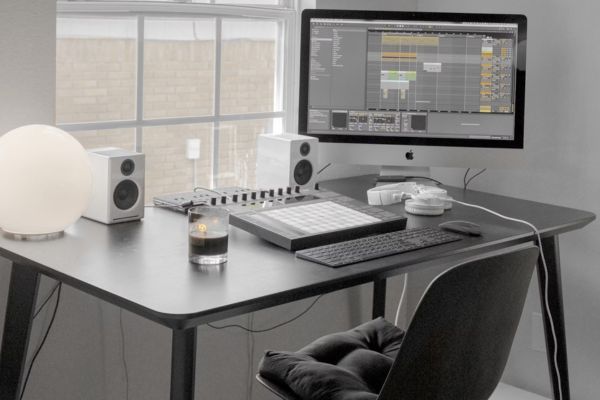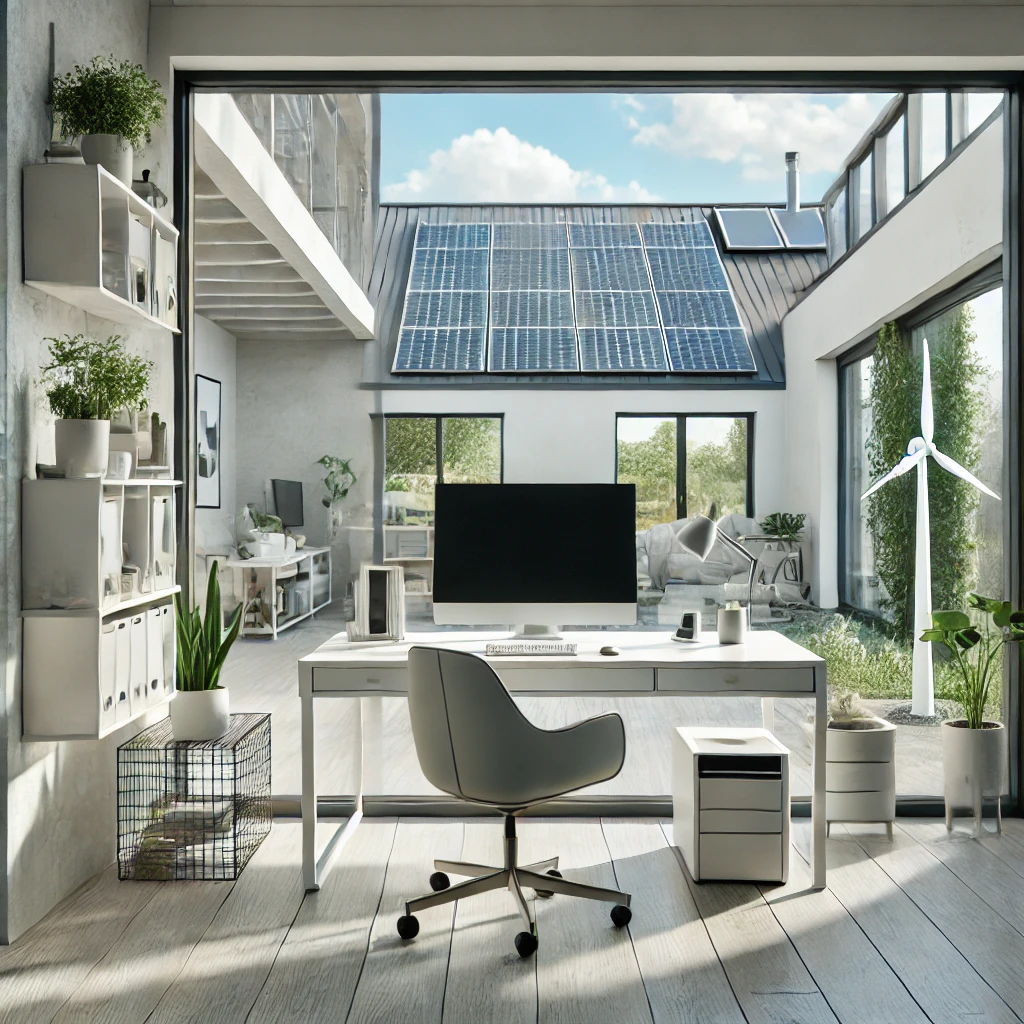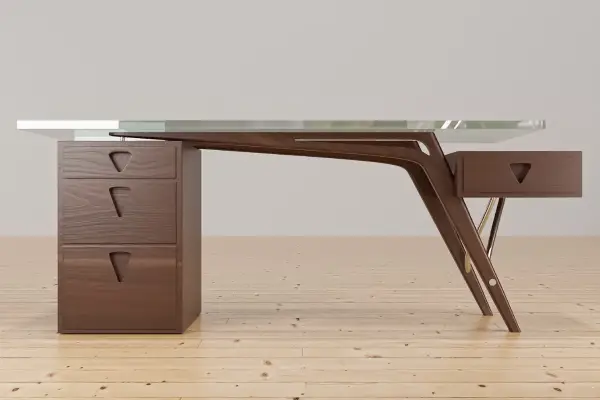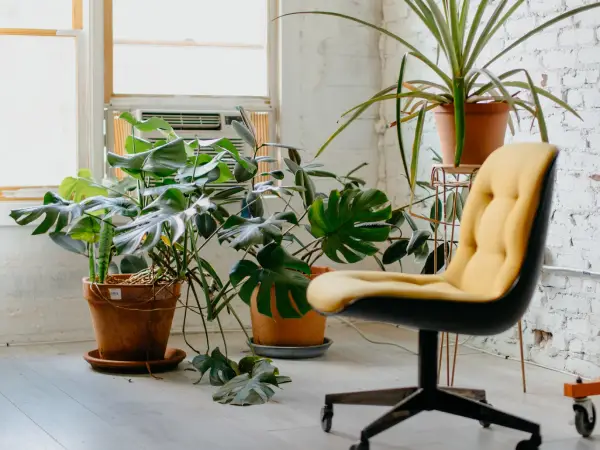Brief Overview of Minimalist Office Decor
Minimalist office decor focuses on creating a clean, uncluttered, and functional workspace. It emphasizes simplicity, where every element serves a purpose and contributes to a serene and efficient environment. The minimalist approach reduces distractions, allowing for better concentration and productivity while fostering a calm and organized atmosphere.
Importance of Choosing the Right Color Scheme
Choosing the right color scheme is a critical aspect of minimalist office decor. Colors can influence mood, productivity, and overall well-being. The right palette can make your office feel more spacious, organized, and inviting, while the wrong choices can lead to a cluttered or chaotic environment. A well-chosen color scheme enhances the minimalist aesthetic, ensuring that your office remains a place of focus and inspiration.
Purpose of the Article
The purpose of this article is to guide you in selecting the best color schemes for your minimalist office. We will explore different approaches to color selection, from classic neutral palettes to bold and pastel options. By understanding the principles of minimalist color schemes and learning how to incorporate them effectively, you can create a workspace that is both functional and visually appealing. Whether you’re setting up a new office or revamping an existing one, this guide will help you achieve a harmonious and productive environment through thoughtful color choices.
Understanding Minimalist Color Schemes
Definition of Minimalist Color Schemes
Minimalist color schemes are characterized by their simplicity, subtlety, and elegance. They often use a limited palette of neutral tones, soft pastels, or monochromatic hues to create a clean and cohesive look. These schemes prioritize harmony and balance, avoiding overly bright or clashing colors that can disrupt the serene and orderly environment of a minimalist office.
Principles of Color Selection in Minimalist Design
When selecting colors for a minimalist office, several key principles should guide your choices:
Simplicity: Stick to a few key colors to maintain a streamlined and uncluttered appearance. Too many colors can create visual noise, detracting from the minimalist aesthetic.
Harmony: Choose colors that work well together and create a sense of cohesion. This can be achieved by using different shades of the same color or by pairing complementary neutrals.
Subtlety: Opt for muted or understated tones rather than bold, vibrant colors. Subtle colors contribute to a calm and focused atmosphere, which is essential for a productive workspace.
Functionality: Consider how different colors can impact your mood and productivity. Some colors are more conducive to concentration and calm, while others can be distracting or overly stimulating.
The Impact of Color on Mood and Productivity
Colors have a significant psychological impact, influencing emotions, energy levels, and cognitive functions. In a minimalist office, the right color scheme can enhance productivity and well-being:
White: Often associated with cleanliness and simplicity, white can make a space feel open and airy. It reflects light, enhancing the brightness of the room and creating a sense of spaciousness.
Gray: Gray tones offer a sophisticated and modern look. They are neutral and unobtrusive, providing a calm background that helps to minimize distractions.
Beige and Taupe: These warm neutrals create a cozy and inviting atmosphere. They add a touch of warmth without overwhelming the senses, making them ideal for creating a balanced and comfortable workspace.
Pastels: Soft pastel colors, such as blush pink, mint green, and baby blue, introduce a subtle touch of color without disrupting the minimalist aesthetic. They can evoke feelings of tranquility and happiness.
Bold Accents: While minimalist design typically avoids bright colors, incorporating bold accents in small doses can add interest and dynamism. Carefully chosen accent colors like black, navy, or forest green can create focal points and highlight specific areas without overpowering the overall design.
By understanding these principles and the psychological effects of color, you can make informed decisions when choosing the color scheme for your minimalist office. The next section will delve into classic neutral color schemes, providing examples and recommendations for creating a sophisticated and timeless minimalist workspace.
Classic Neutral Color Schemes
White and Off-White
Benefits of an All-White Office
An all-white office embodies the essence of minimalist design. White is the ultimate neutral color, providing a blank canvas that amplifies natural light and makes the space feel larger and more open. An all-white office promotes a sense of cleanliness and order, creating a calming and distraction-free environment.
Adding Texture and Depth with Varying Shades of White
To avoid a sterile or monotonous look, incorporate varying shades of white and off-white. Use different textures and finishes—matte, glossy, soft fabrics, and hard surfaces—to add visual interest and depth. For example, pair a glossy white desk with a matte white wall and a soft, off-white rug. These subtle variations will create a dynamic yet cohesive look.
Gray Tones
Creating a Sophisticated and Calm Environment
Gray is a versatile and elegant choice for a minimalist office. It offers a range of shades from light silver to deep charcoal, each bringing a unique character to the space. Light gray can create a serene and airy atmosphere, while darker grays add depth and sophistication. Gray tones are less stark than white, providing a softer backdrop that is still neutral and unobtrusive.
Pairing Light and Dark Grays for Contrast
To enhance the visual appeal of a gray-toned office, combine light and dark grays. Use a light gray for walls to keep the room bright, and incorporate dark gray elements like furniture, accessories, or an accent wall to add contrast and dimension. This interplay between light and dark creates a balanced and visually interesting space.
Beige and Taupe
Warm and Inviting Neutral Tones
Beige and taupe are warm neutrals that can make a minimalist office feel more inviting and cozy. These colors are soft and soothing, promoting relaxation and comfort. Beige and taupe also pair well with natural materials like wood and stone, enhancing the organic feel of the space.
Incorporating Natural Materials to Enhance the Look
Integrate natural materials and textures to complement beige and taupe tones. Wooden furniture, stone accents, and woven textiles can add warmth and character to your office. For example, a wooden desk and shelves, a stone planter, and a beige upholstered chair can create a harmonious and inviting minimalist workspace.
Examples of Classic Neutral Color Schemes
White and Light Gray: Combine white walls with light gray furniture and accessories. Add texture with a mix of matte and glossy finishes.
Gray and Charcoal: Use light gray for the main elements, like walls and large furniture pieces, and add charcoal accents through smaller items like lamps, frames, or throw pillows.
Beige and Wood: Pair beige walls with wooden furniture and decor. Add soft textiles in similar shades for a cohesive, warm look.
Taupe and Natural Textiles: Taupe walls can be complemented with natural textiles like linen curtains, a jute rug, and cotton cushions.
By choosing a classic neutral color scheme, you can create a timeless and sophisticated minimalist office that promotes focus and tranquility. The next section will explore monochromatic color schemes, offering tips on how to effectively use a single color in varying shades to achieve a cohesive and stylish look.
Monochromatic Color Schemes
Definition and Benefits of a Monochromatic Scheme
A monochromatic color scheme involves using different shades, tints, and tones of a single color throughout your office decor. This approach creates a cohesive and harmonious look, as it relies on variations of one color to add depth and interest without introducing contrasting hues. Monochromatic schemes are ideal for minimalist design because they emphasize simplicity and uniformity, helping to create a serene and uncluttered environment.
Tips for Selecting a Base Color
Choosing the right base color is crucial for a successful monochromatic scheme. Here are some tips to help you select a base color that aligns with minimalist principles:
Consider Mood and Functionality: Think about how different colors affect your mood and productivity. For example, blue is often associated with calm and focus, making it a good choice for a workspace.
Test Before Committing: Try out small samples of your chosen color on different walls and observe how it looks at various times of the day. Lighting can significantly alter the appearance of a color.
Opt for Versatility: Choose a color that can be easily paired with different textures and materials. Neutral colors like gray, beige, and soft pastels are often versatile and adaptable.
Creating Depth and Interest with Different Shades and Textures
To prevent a monochromatic color scheme from appearing flat or boring, use different shades, tints, and tones of your chosen color. Here are some ways to add depth and interest:
Layering Shades: Use lighter shades for larger surfaces like walls and ceilings, and darker shades for furniture, accents, and accessories. This creates a layered effect that adds visual interest.
Incorporating Texture: Mix various textures to enhance the monochromatic scheme. For example, pair a matte wall paint with a glossy desk, a plush rug, and soft fabric cushions. Textural variety adds richness and dimension to the space.
Patterns and Prints: Subtle patterns and prints can also contribute to the depth of a monochromatic scheme. Consider incorporating tone-on-tone patterns in rugs, curtains, or throw pillows to add a touch of complexity without breaking the color harmony.
Examples of Effective Monochromatic Color Schemes
Here are a few examples of monochromatic color schemes that work well in a minimalist office:
Shades of Gray: Start with light gray walls, medium gray furniture, and dark gray accents. Add texture with a mix of materials like concrete, metal, and fabric.
Blues: Use soft blue for the walls, navy blue for furniture, and various shades of blue for accessories like lamps, cushions, and artwork. Incorporate different textures such as glass, fabric, and metal to add interest.
Beiges: Create a warm and inviting space with beige walls, tan furniture, and darker beige or brown accents. Add natural textures like wood, linen, and rattan to enhance the monochromatic look.
Greens: A calming green palette can include pale green walls, deeper green furniture, and forest green accents. Use a mix of plant-based materials and textures like wood, stone, and cotton for a cohesive, nature-inspired look.
By effectively using a monochromatic color scheme, you can create a minimalist office that is both stylish and serene. The simplicity and uniformity of this approach can help reduce visual clutter and enhance focus, making it an excellent choice for a productive workspace. The next section will delve into minimalist color palettes with accent colors, providing guidance on how to introduce pops of color without compromising the minimalist aesthetic.
Minimalist Color Palettes with Accent Colors
Introduction to Using Accent Colors in Minimalist Decor
While minimalist design often focuses on neutral and subdued tones, incorporating accent colors can add visual interest and personality to your office. Accent colors are used sparingly to highlight specific areas, create focal points, and break up the monotony of a monochromatic or neutral palette. When done correctly, accent colors can enhance the minimalist aesthetic by adding depth and vibrancy without overwhelming the space.
Popular Accent Colors for Minimalist Offices
Here are some popular accent colors that work well in minimalist offices:
Black: Black is a powerful and versatile accent color that can add sophistication and contrast. Use it for elements like frames, lamps, chairs, or hardware to create a striking visual impact.
Navy: Navy blue is a classic and elegant choice that pairs well with neutral tones. It adds a touch of richness and depth, making it ideal for accent walls, cushions, or artwork.
Forest Green: This deep, earthy green brings a sense of nature and tranquility to the office. It can be used in plants, textiles, or small decor items to create a refreshing and calming effect.
Muted Mustard: A muted mustard yellow adds warmth and energy without being too bold. It can be used in rugs, throw pillows, or desk accessories to infuse a touch of color.
Blush Pink: Soft blush pink adds a gentle and subtle accent that complements neutral tones beautifully. Use it for small decor pieces, artwork, or soft furnishings to introduce a hint of color.
Tips for Incorporating Accent Colors Without Overwhelming the Space
To maintain the minimalist aesthetic while adding accent colors, follow these tips:
Use Sparingly: Limit the use of accent colors to a few key elements in the room. Overusing accent colors can disrupt the simplicity and cohesiveness of the minimalist design.
Balance and Proportion: Ensure that the accent colors are balanced with the primary neutral tones. Use the 60-30-10 rule: 60% of the room in a dominant neutral color, 30% in a secondary neutral, and 10% in the accent color.
Consistency: Keep the accent color consistent throughout the space. Choose one or two accent colors and repeat them in various elements to create a unified look.
Small Pops of Color: Introduce accent colors through small items like cushions, rugs, lamps, or artwork. These can be easily changed or updated without a significant overhaul of the decor.
Functional Items: Use accent colors in functional items like chairs, lamps, or storage solutions. This ensures that the accents are not only decorative but also serve a practical purpose.
Examples of Incorporating Accent Colors
Here are a few examples of how to effectively use accent colors in a minimalist office:
Black and White: Start with a white base and add black accents through picture frames, a desk lamp, and a chair. The black elements create a crisp, modern look without overwhelming the space.
Gray and Navy: Pair light gray walls with navy blue cushions, a rug, and a few decorative items. The navy accents add depth and richness, creating a sophisticated and calming environment.
Beige and Forest Green: Use beige as the primary color for walls and large furniture pieces. Add forest green accents through plants, a desk chair, and artwork to bring a touch of nature into the space.
White and Muted Mustard: A white office with muted mustard accents in a throw pillow, a small rug, and a desk organizer can add warmth and interest without compromising the minimalist aesthetic.
By thoughtfully incorporating accent colors, you can personalize your minimalist office while maintaining its clean and uncluttered look. The next section will explore minimalist pastel color schemes, offering guidance on how to use soft and soothing colors to create a serene and inviting workspace.
Minimalist Pastel Color Schemes
The Appeal of Soft Pastel Colors in Minimalist Design
Pastel colors are a wonderful addition to minimalist design due to their soft, muted tones that promote tranquility and relaxation. These colors are subtle and understated, providing a gentle pop of color without overwhelming the space. Pastels can brighten a room, making it feel more inviting and serene, which is ideal for a minimalist office focused on productivity and calmness.
Choosing the Right Pastel Shades
When selecting pastel colors for your minimalist office, consider the following shades:
Blush Pink: A soft, warm pink that adds a touch of elegance and femininity without being too bold.
Mint Green: A refreshing and calming shade that brings a sense of nature and serenity to the office.
Baby Blue: A soothing and tranquil color that promotes focus and concentration.
Lavender: A light purple that is both calming and sophisticated, adding a touch of creativity to the space.
Pale Yellow: A gentle, cheerful color that can lift the mood without being overpowering.
Balancing Pastels with Neutrals for a Cohesive Look
To maintain the minimalist aesthetic, it’s important to balance pastels with neutral tones. Here are some tips for achieving a cohesive look:
Neutral Base: Use neutral colors like white, gray, or beige as the primary color for walls, furniture, and large decor items. This provides a clean backdrop that allows the pastels to stand out without creating visual clutter.
Accent Elements: Incorporate pastels through accent elements such as cushions, rugs, artwork, and small decor items. These pops of color add interest and personality while maintaining a minimalist vibe.
Mix and Match: Combine different pastel shades to create a layered and dynamic look. Ensure that the colors complement each other and blend seamlessly with the neutral base.
Subtle Patterns: Use subtle patterns in pastel colors to add texture and depth. Tone-on-tone patterns in textiles like curtains, cushions, and rugs can enhance the overall design without disrupting the minimalist feel.
Natural Materials: Pair pastel colors with natural materials like wood, stone, and metal. The combination of soft pastels and natural textures creates a harmonious and balanced environment.
Examples of Minimalist Pastel Color Schemes
Here are a few examples of how to effectively use pastel colors in a minimalist office:
White and Blush Pink: Start with white walls and furniture, then add blush pink accents through cushions, a desk lamp, and artwork. The soft pink adds a touch of warmth and elegance.
Gray and Mint Green: Use light gray as the primary color for walls and large furniture pieces. Incorporate mint green accents with a rug, potted plants, and decorative items to create a fresh and calming atmosphere.
Beige and Baby Blue: Pair beige walls with baby blue accents in a chair, throw pillows, and small decor items. The combination of warm beige and cool blue creates a balanced and inviting space.
White and Lavender: A white office with lavender accents in curtains, a desk organizer, and wall art can add a touch of sophistication and creativity without overwhelming the minimalist design.
Light Gray and Pale Yellow: Use light gray for the main elements and add pale yellow accents through a rug, cushions, and a few decorative items. The gentle yellow adds cheerfulness and lightens the space.
By incorporating pastel colors thoughtfully, you can create a minimalist office that is both soothing and visually appealing. The soft hues bring a sense of calm and tranquility, enhancing the overall productivity and comfort of the workspace. The next section will delve into bold minimalist color schemes, offering guidance on how to use vibrant colors effectively in a minimalist office.
Bold Minimalist Color Schemes
Using Bold Colors in a Minimalist Office
Incorporating bold colors in a minimalist office can add energy and personality to the space without compromising the clean and uncluttered aesthetic. Bold colors can create striking focal points, add visual interest, and make a statement. The key to successfully using bold colors in a minimalist office is to balance them with neutral tones and use them sparingly.
Tips for Incorporating Bold Colors
Here are some tips for effectively incorporating bold colors in a minimalist office:
Start Small: Introduce bold colors through small, easily changeable elements like cushions, desk accessories, and artwork. This allows you to experiment with color without overwhelming the space.
Anchor with Neutrals: Balance bold colors with neutral tones like white, gray, or beige. Use bold colors as accents while keeping the majority of the space neutral to maintain a minimalist look.
Focus on Functionality: Use bold colors in functional items like chairs, lamps, and storage solutions. This ensures that the accents are not only decorative but also serve a practical purpose.
Create Focal Points: Use bold colors to highlight specific areas or elements in the room, such as an accent wall, a statement piece of furniture, or a striking piece of artwork. This draws attention and adds visual interest.
Limit the Palette: Stick to one or two bold colors to avoid creating a cluttered look. A limited palette ensures that the bold colors complement each other and the overall design.
Examples of Effective Bold Minimalist Color Schemes
Here are a few examples of bold minimalist color schemes that work well in an office setting:
Black and White with Red Accents: Start with a classic black and white base and add red accents through a chair, desk lamp, and wall art. The red adds a pop of color and energy while maintaining a sleek and modern look.
Gray and Yellow: Use light gray for walls and large furniture pieces, and incorporate bold yellow accents with a rug, cushions, and a few decorative items. The yellow adds warmth and vibrancy without overwhelming the space.
Navy Blue and White: Pair navy blue walls with white furniture and accessories. Add small navy blue accents like a chair, lamp, and desk organizer to create a cohesive and sophisticated look.
Beige and Teal: Use beige as the primary color and add bold teal accents through a statement wall, a chair, and decorative items. The teal adds a touch of color and elegance without compromising the minimalist aesthetic.
Black and Gold: Combine black walls or furniture with gold accents in light fixtures, frames, and small decor pieces. The gold adds a luxurious touch and contrasts beautifully with the black for a bold and stylish look.
Tips for Creating Bold Minimalist Color Schemes
To achieve a successful bold minimalist color scheme, consider the following tips:
Consistency: Ensure that the bold colors are used consistently throughout the space. Repeating the same color in different elements creates a cohesive and harmonious look.
Harmony: Choose bold colors that harmonize with each other and the neutral base. Avoid clashing colors that can disrupt the minimalist aesthetic.
Proportion: Maintain the right proportion of bold colors to neutrals. The majority of the space should remain neutral, with bold colors used as accents to add interest and dynamism.
Experiment: Don’t be afraid to experiment with different bold colors and placements. Test different combinations to find what works best for your space and personal style.
By thoughtfully incorporating bold colors into your minimalist office, you can create a dynamic and visually appealing workspace that reflects your personality and enhances productivity. The next section will provide tips for choosing the right color scheme, ensuring that your minimalist office is both functional and aesthetically pleasing.
Tips for Choosing the Right Color Scheme
Assessing Your Space and Lighting
The first step in choosing the right color scheme for your minimalist office is to assess the space and lighting conditions. Here are some tips to consider:
Natural Light: Observe how much natural light your office receives throughout the day. Rooms with ample natural light can handle darker and bolder colors, while darker rooms may benefit from lighter and brighter hues to enhance the sense of space and brightness.
Artificial Lighting: Consider the type of artificial lighting in your office. Warm lighting can complement warm colors like beige and taupe, while cool lighting can enhance cooler tones like gray and blue.
Room Size: The size of your office can influence your color choices. Smaller spaces can feel larger and more open with lighter colors, while larger spaces can handle a mix of light and dark shades without feeling cramped.
Understanding Color Psychology
Color psychology plays a crucial role in how different colors can impact your mood and productivity. Here are some key insights:
White: Promotes clarity, cleanliness, and simplicity. It can make a space feel open and airy.
Gray: Conveys sophistication, neutrality, and calmness. It’s an excellent backdrop for other colors.
Beige: Evokes warmth, comfort, and coziness. It pairs well with natural materials.
Blue: Enhances focus, calmness, and productivity. Ideal for creating a serene workspace.
Green: Brings a sense of nature, balance, and tranquility. Great for reducing stress.
Yellow: Adds energy, optimism, and creativity. Use sparingly to avoid overstimulation.
Considering Personal Preferences and Style
Your personal preferences and style should be at the forefront when choosing a color scheme. Here are some tips to align your choices with your tastes:
Favorite Colors: Think about the colors you naturally gravitate towards and feel comfortable with. Incorporating your favorite colors can make your office feel more personal and inviting.
Design Inspiration: Look for inspiration in design magazines, websites, or social media. Create a mood board with colors and styles that resonate with you to help visualize your ideal office.
Experimentation: Don’t be afraid to experiment with different color combinations. Start with small accents and gradually incorporate more if you feel confident with the choices.
Practical Considerations
Practicality is essential when selecting a color scheme. Here are some practical tips:
Maintenance: Consider the maintenance requirements of different colors. Light colors may show dirt and wear more easily, while darker colors can hide imperfections.
Flexibility: Choose a color scheme that offers flexibility for future changes. Neutral bases with interchangeable accents allow you to update the look of your office without a complete overhaul.
Functionality: Ensure that the colors you choose support the functionality of your workspace. For example, calm and soothing colors are better suited for areas where focus and concentration are required.
Combining Different Elements
To create a cohesive and balanced look, combine different elements thoughtfully:
Primary Color: Select a primary color that will dominate the space. This is usually a neutral tone like white, gray, or beige.
Secondary Color: Choose a secondary color that complements the primary color and adds depth. This could be a softer pastel or a muted shade.
Accent Colors: Add one or two accent colors to create focal points and add interest. These should be bold or vibrant colors used sparingly.
Examples of Thoughtful Color Combinations
Here are a few examples of how to combine different elements effectively:
White, Gray, and Navy: Use white for walls, gray for furniture, and navy as an accent color in cushions, artwork, and decor items.
Beige, Mint Green, and Gold: Beige as the primary color, mint green for secondary elements like a rug or chair, and gold accents in light fixtures and small decor pieces.
Light Gray, Blush Pink, and Black: Light gray for the main elements, blush pink for secondary items like curtains and cushions, and black as a bold accent in frames and hardware.
By carefully considering these factors, you can choose a color scheme that enhances the minimalist design of your office while creating a functional, stylish, and personalized workspace. The next section will conclude the article with a recap of key points and an encouragement to experiment with your minimalist office color scheme.
Conclusion
Choosing the right color scheme for your minimalist office is a crucial step in creating a workspace that is both functional and aesthetically pleasing. Whether you opt for classic neutrals, monochromatic palettes, pastel hues, bold accents, or a combination thereof, each choice can significantly impact the atmosphere and productivity of your workspace.
Recap of Key Points
Minimalist Principles: Embrace simplicity, clarity, and functionality in your office decor.
Color Psychology: Consider how different colors can influence mood and productivity.
Balance and Harmony: Maintain a balance between neutral tones and accent colors to create a cohesive look.
Personal Style: Reflect your personal preferences and style to make your workspace feel inviting and comfortable.
Practical Considerations: Think about maintenance, flexibility, and the functionality of your chosen color scheme.
Experiment and Personalize
Don’t hesitate to experiment with different color combinations and arrangements until you find the perfect fit for your minimalist office. Your workspace should inspire creativity, promote focus, and support your professional endeavors.
Remember, the right color scheme can transform your office into a serene and productive environment where you can thrive. Start with small changes and gradually incorporate more elements as you refine your vision. With careful consideration and creativity, your minimalist office will become a space that enhances both your work and well-being.
If you have any questions or need further guidance on creating your minimalist office color scheme, feel free to reach out. Happy decorating!






